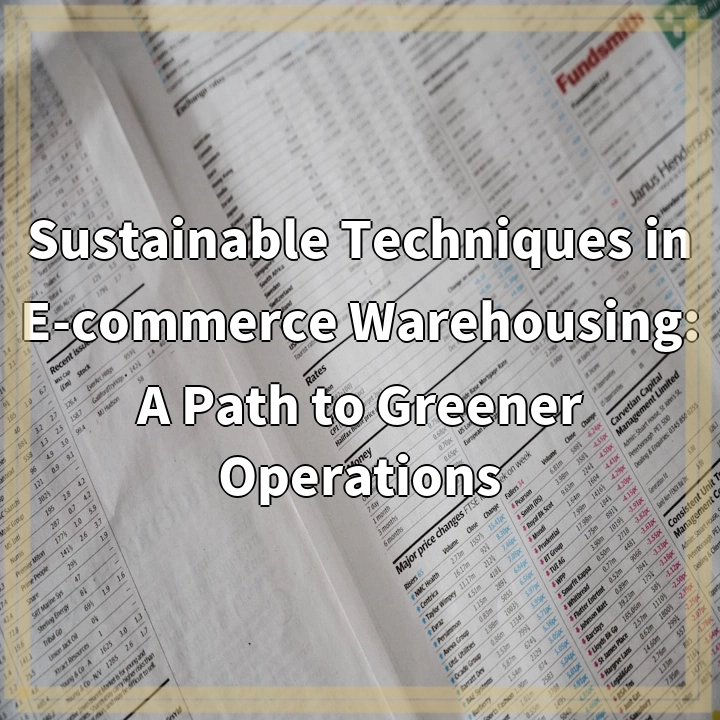
What it is:
E-commerce warehousing refers to the storage and management of products that are sold online. With the rapid growth of the e-commerce industry, the demand for efficient warehousing has also surged. However, this has come with its own set of environmental challenges. Sustainable techniques in e-commerce warehousing aim to address these issues and minimize the industry’s carbon footprint.
Real-World Problems:
1. Energy Consumption: E-commerce warehouses require a significant amount of energy to power lighting, heating, cooling, and technology infrastructure. This heavy energy consumption contributes to greenhouse gas emissions and exacerbates climate change.
2. Packaging Waste: E-commerce fulfillment often involves excessive packaging to protect products during transit. This leads to a substantial amount of packaging waste that ends up in landfills or contributes to pollution.
3. Last-Mile Delivery Pollution: The final leg of the shipping process, known as last-mile delivery, often involves multiple individual deliveries to different addresses. This results in increased fuel consumption, traffic congestion, and air pollution, particularly in urban areas.
4. Lack of Recycling Infrastructure: Many e-commerce warehouses struggle with inadequate recycling infrastructure, leading to improper disposal of waste materials such as cardboard, plastic, and electronic components.
5. Resource Depletion: The demand for rapid order fulfillment puts pressure on e-commerce warehouses to constantly replenish inventory. This increases extraction of natural resources, such as water and raw materials, contributing to resource depletion.
6. Labor and Ethical Concerns: Some e-commerce warehouses have faced criticism for poor labor conditions, including low wages, long working hours, and inadequate safety measures. Sustainability in e-commerce warehousing should also address these social and ethical aspects.

Solutions for Sustainable E-commerce Warehousing:
Implementing sustainable techniques in e-commerce warehousing can help address the environmental challenges mentioned earlier. Here are some solutions that can pave the way for greener operations:
1. Energy Efficiency:
– Upgrade lighting systems to energy-efficient LED fixtures.
– Optimize heating, ventilation, and air conditioning (HVAC) systems.
– Utilize renewable energy sources, such as solar panels, to power warehouse operations.
2. Packaging Optimization:
– Minimize packaging materials and adopt eco-friendly alternatives.
– Implement right-sizing practices to match packaging size with product dimensions.
– Encourage product manufacturers to use sustainable packaging for their products.
3. Sustainable Transportation:
– Consolidate shipments to reduce the number of vehicles on the road.
– Explore alternative transportation options like electric vehicles or bicycles for last-mile delivery.
– Collaborate with logistics providers to optimize delivery routes and reduce fuel consumption.
4. Waste Management and Recycling:
– Implement comprehensive recycling programs to handle cardboard, plastic, and electronic waste.
– Partner with local recycling centers or waste management companies to ensure proper disposal.
– Educate warehouse staff on waste sorting and recycling practices.
5. Inventory Management:
– Optimize inventory planning and demand forecasting to reduce overstocking.
– Adopt lean inventory practices to minimize resource extraction and reduce waste.
– Prioritize sourcing from suppliers with sustainable and ethical practices.
6. Worker Well-being and Fair Labor Practices:
– Provide fair wages, reasonable working hours, and safe working conditions for warehouse staff.
– Offer training and development opportunities to empower employees.
– Implement ethical labor practices throughout the supply chain.















